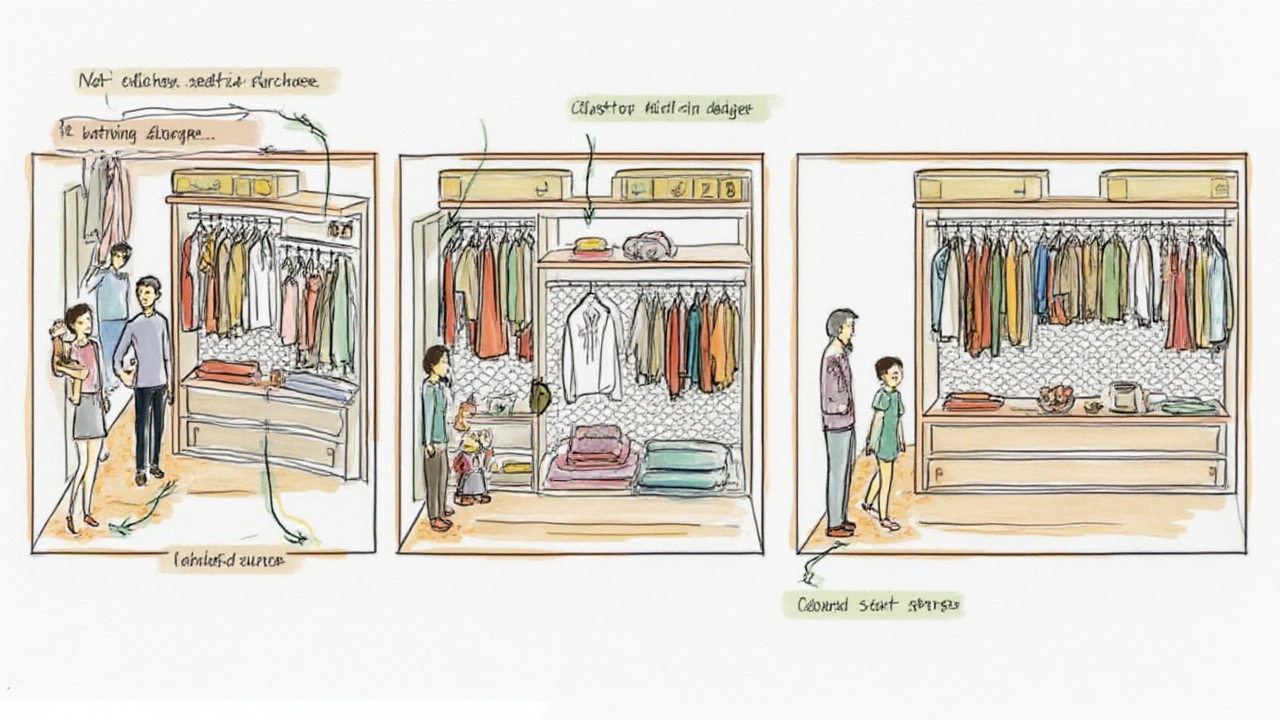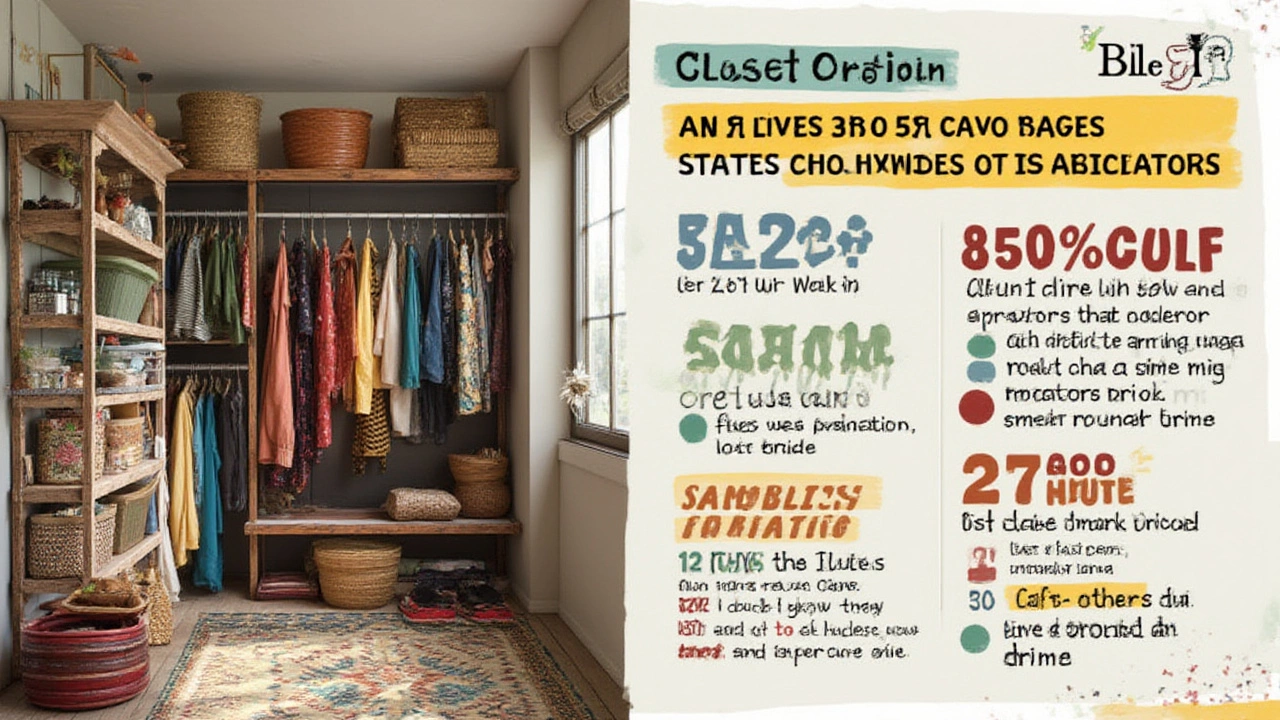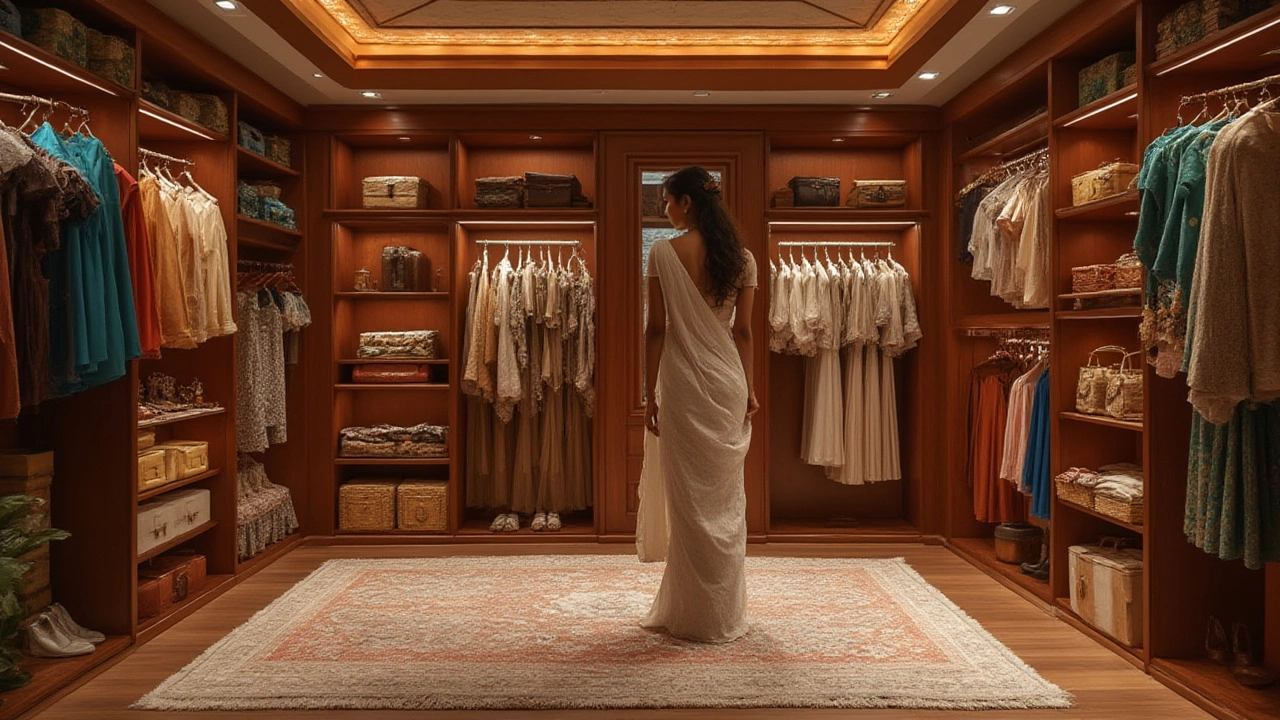Imagine walking into a room inside your bedroom where your closet swallows you whole, letting you stand comfortably among rows of hanging clothes, shoes, and shelves. Americans will almost never call this a "walk-in wardrobe." Instead, they use one clear phrase that you hear on every HGTV home design show: the "walk-in closet." That little twist in wording might seem small, but it actually sums up how the US thinks about storage spaces for clothes.
How Americans Really Name Storage Spaces
In the UK, “wardrobe” means a tall piece of furniture for hanging clothes, or sometimes, an entire walk-in room. Americans almost always stick with “closet.” A wardrobe is some big wooden thing your grandma might own. When explaining home layouts or hunting on real estate websites, you’ll never see “walk-in wardrobe” in the US description. It’s almost always “walk-in closet.” If you say walk-in wardrobe during an open house in Boston or Dallas, you might get decent guesses, but you’ll sound a bit foreign.
The term “walk-in closet” started gaining traction in the post-World War II housing boom, especially as Americans wanted bigger houses and more storage. Home designers moved from sticking armoires (the furniture wardrobes) in corners to actually designing dedicated rooms or alcoves to swallow clutter. By the late 20th century, a walk-in closet wasn’t just for the rich — it started popping up in mid-range and even budget homes across the country. Today, surveys by the National Association of Home Builders show around 93% of newly built US homes include a walk-in closet in the master bedroom.
Let’s be honest, American houses are generally bigger than homes in most of the world. That’s partly why walk-in closets are so common. Some regions, like the South and Midwest, love sprawling master suites with giant walk-in closets, while older homes in cities like New York might squeeze by with just tiny reach-in ones. Either way, when Americans want to brag about clothing storage, “closet” is always the word.
The Evolution of Closets in the USA
The word “closet” used to mean a small, private room, sort of like a study. Back in colonial America, homes barely had closets at all — most people used trunks or old wardrobes. But as the 20th century rolled around, space for closets became a status symbol. By the 1950s, with suburbs booming, the size and fanciness of closets grew, morphing from simple hidden spaces to whole walk-in rooms you could decorate and even sit in.
The "master walk-in closet" became a feature buyers expected in a new house. Homebuilders responded: between 1980 and 2000, the average size of an American home shot up 50%. Part of this growth? Bigger closets. Storage became part of the American dream. Today, 60% of homeowners say having a walk-in closet is extremely important when shopping for a new home. That number spikes to over 80% in luxury markets where million-dollar homes feature walk-in closets bigger than some apartments.
Newer trends have pushed walk-ins even further. Ever seen a closet with a marble-topped island for jewelry, designated shoe walls, or even built-in laundry hampers? Some high-end homes even throw in charging stations for phones, windows for natural light, and air conditioning just for the closet! Instagram and Pinterest are stuffed with dream closet “reveals” that inspire envy and, let’s be totally real, sometimes a little closet FOMO.

Differences Between American Closets and Wardrobes
So what truly separates a *walk-in closet* from a walk-in wardrobe, besides the name? For one, furniture wardrobes are standalone pieces, while American closets are usually built right into the house. Once it's part of the house, it's a closet. If you buy a wardrobe from Ikea and have to put it together with tiny wrenches, Americans would still call it a wardrobe (or armoire if they're feeling fancy). But walk-in closets get drywall, doors, built-in lights, and shelves created just for that purpose.
Design-wise, Americans go all out. California Closets and The Container Store have made fortunes off building custom storage, shoe racks, sliding baskets, even clever pull-out rods for neckties and scarves. Most walk-in closets are U- or L-shaped, letting you walk straight in and spin around without bumping elbows. Double rods for shirts and pants, separate shelves for bags, and divided spaces for his-and-hers wardrobes are common step-ups. Angled shoe racks, velvet-lined drawers, rotating mirrors — yes, these all exist.
Interestingly, regional tastes affect the design, too. In Florida, for instance, you’ll see walk-ins made of moisture-resistant materials to survive the humidity, since nobody likes a moldy closet. In luxurious California homes, cedar lining is common to fight off bugs and give that woodsy aroma. Meanwhile, urban apartments might just have a glorified walk-in with tight shelving and maybe a compact dressing area (if you’re lucky!).
Here’s a quick comparison table that sums things up:
| Term | Typical in USA? | Common Features |
|---|---|---|
| Walk-in closet | Yes | Built-in shelves, rods, lighting, optional island |
| Wardrobe (furniture) | Mostly No | Standalone, wooden, may have drawers |
| Walk-in wardrobe | No (rarely used) | More common UK term, same as walk-in closet |
Walk-In Closet Design Tips for American Homes
If you’re looking to create that perfect walk-in closet in your American home (or just want to dream), here’s what actually works — all based on real advice, not the TV show fluff. First: lighting. Don’t just rely on a ceiling bulb. Install LED strips under your shelves, add a small lamp, or — if budget allows — a window for sunshine. Lighting changes the whole mood, especially if you’re choosing colors or makeup.
Second: go vertical. Floor-to-ceiling storage means you can stash spare bedding up high while keeping shoes and daily wear at arm’s length. Adjustable organizational systems are a lifesaver. And don’t skip out on proper closet rods — double up wherever possible, since shirts and pants don’t need to hang as low as dresses. Dedicated pull-out drawers for jewelry or accessories are not just practical, but help avoid the lost-earring-blackhole disaster. Americans love a tidy closet, and custom organizers are worth their weight in gold if you hate clutter.
Third: make it personal. Some folks use a walk-in as a daily dressing room, with mirrors on three sides and even a tufted bench to sit on while putting on shoes. Others just want grid-like efficiency. Add color with bins, hang a piece of art, or install scented sachets (Americans are obsessed with keeping closets smelling fresh). Shoe lovers? Tiered racks work way better than dumping them on the floor. For families, separate areas for adults and kids save headaches in the morning rush.
Pro tip: don’t forget about airflow! Cheap walk-ins get musty quickly. Add a vent, run a small fan, or drop in some moisture-absorbing packs — especially in damp places. And if your budget’s tight? Closet shelves from big-box stores like Home Depot or Target can look sharp if you arrange them neatly and mix in a few nice baskets or bins. A great walk-in closet is as much about smart planning as it is about spending big bucks.

Fun Facts and Closet Stats You Might Not Know
Americans spend an average of 11 minutes per day picking out clothes. That adds up to 2.7 days a year. Having a well-organized walk-in closet literally saves you days of time! On the design side, 35% of American women say their dream home feature is an organized walk-in closet — more than a big kitchen or spa bathroom.
Some walk-in closets in Beverly Hills mansions are bigger than a typical New York apartment. There’s a well-known house in Houston, Texas, with a 3,000-square-foot walk-in closet featuring its own chandelier, walls of glass shoe shelves, and a spiral staircase. Not everyone gets that, but it shows how wild American closets can go.
As for spending, Americans drop an average of $1,500 to $3,000 on custom walk-in closet installations — though simple wire-rack makeovers can cost under $300. It’s one of the top five investments that add resale value to a home according to Zillow data from 2023. Not surprising, given the demand for *walk in closet* space keeps rising year after year.
There’s even a "National Closet Month" (October) where big stores run sales on closet systems, and influencers post their best closet “before and after” photos. Doing the closet is a mini American obsession, right alongside kitchens and backyards.
So, next time you hear someone talking about a walk-in wardrobe, just know in the States, it’s all about the closet. Chances are, whether tiny or massive, it’s one of the most-used spaces in any American home—and now you know why.

